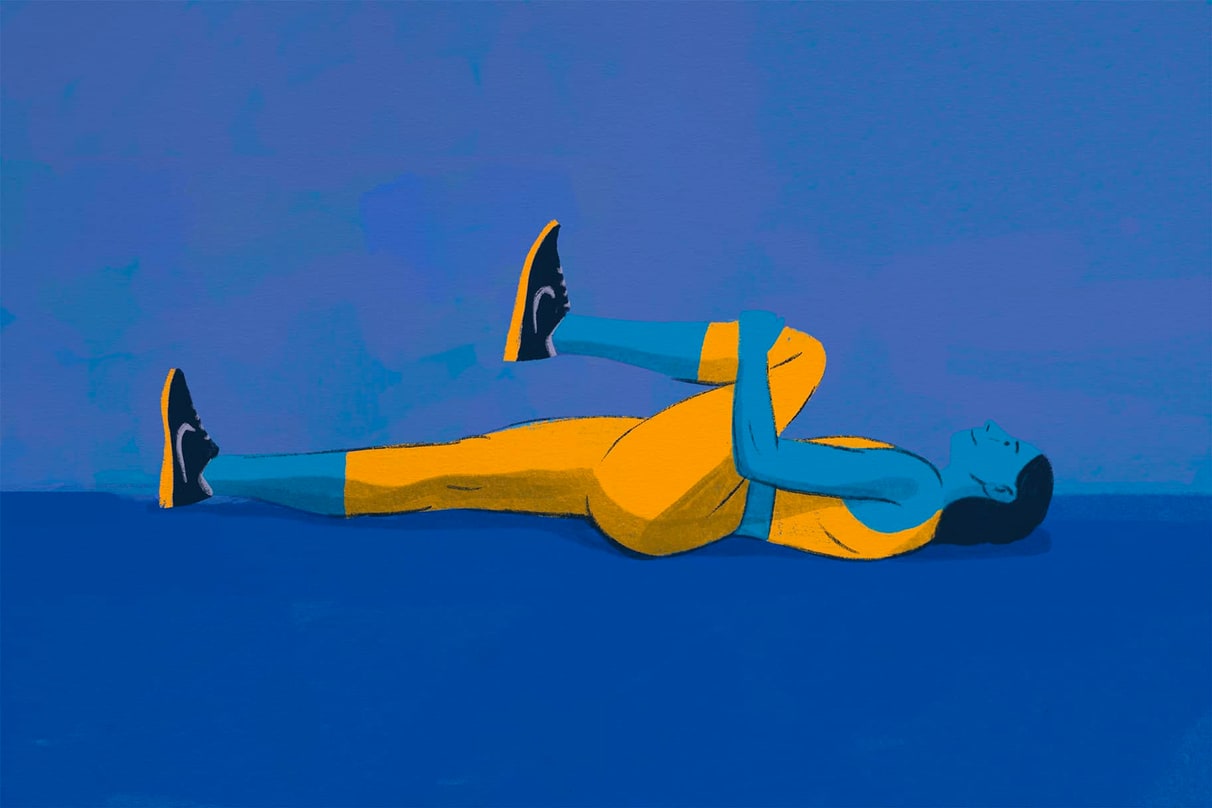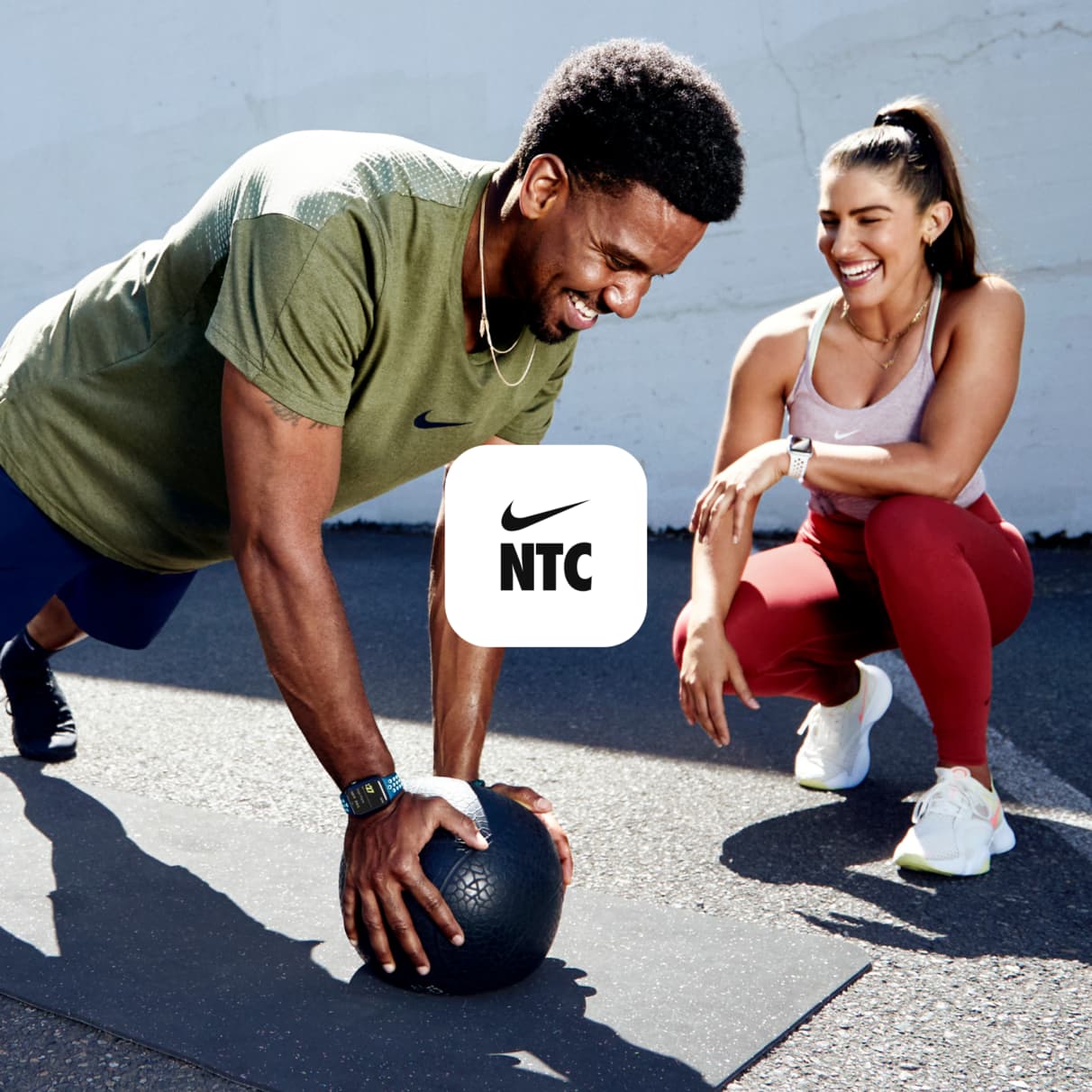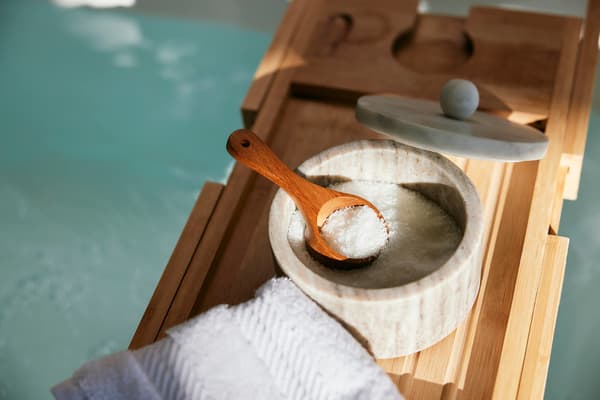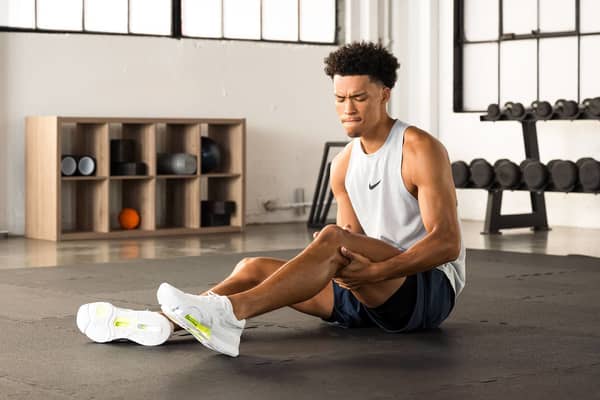What Is Delayed Onset Muscle Soreness?
Sports & Activity
Muscle stiffness and aches are common side effects of exercise. Here’s why it happens — and tips to ease symptoms.

No matter if you start each morning with a run or are a weekend warrior, you’ve probably experienced sore muscles a day or two after a tough workout. This is known as delayed onset muscle soreness, or DOMS, the not-so-fun, but completely normal part of getting stronger.
Why Does Delayed Onset Muscle Soreness Happen?
According to the American College of Sports Medicine, DOMS is a side effect of the muscle repair process.
Exercise creates microscopic tears in your muscles, which is a typical process that’s necessary for growth. When this happens, your body initiates the recovery process, which includes tissue swelling and inflammation. It’s this inflammation that causes the soreness that you feel, Matt Tanneberg, D.C., C.S.C.S., said.
(Related: How To Treat Sore Muscles After a Tough Workout, According to Experts)
You can get delayed soreness by doing a new exercise or activity, or by working at a higher intensity than your standard sweat sesh. For example, lifting a heavier weight, doing more repetitions of an exercise, or working out for a longer period of time can all lead to DOMS.
Certain portions of an exercise can also create more muscle damage than others. “The eccentric, sometimes called the negative, part of an exercise is thought to be a big contributor to soreness after the workout,” said Tom Biggart, D.P.T., C.S.C.S. The reason may be that muscles recruit fewer muscle fibers during the eccentric portion of an exercise, which places more stress on the fibers involved, according to a review published May 2019 in Frontiers in Physiology.
To see eccentrics in action, watch someone run or walk downhill. Or, observe the lowering portion of a biceps curl or squat. Emphasizing these actions — or doing them repeatedly — can make you feel more sore than focusing on the concentric (shortening) or isometric (static) phase of an exercise.
DOMS is typically felt 12 to 48 hours after your workout, but it can last up to 72 hours.
Does Having Delayed Onset Muscle Soreness Mean You Had a Good Workout?
Don’t use soreness as an indicator of a good workout, Biggart said.
Soreness signals that you put enough strain on a muscle for it to kickstart the healing process. But, it “doesn’t necessarily mean that you got a good workout in,” Tanneberg said.
Moreover, you don’t need to experience DOMS after every workout to progress with your fitness goals. In fact, “if your program is designed well, you should rarely be extremely sore,” Biggart said. For context, “extremely sore” would be a seven or greater on a scale of one to 10, where one is no soreness and 10 is maximum soreness, Biggart said.
Plus, DOMS can make it challenging to perform your next workout. It may even delay your training sessions if you’re too sore to move comfortably, which can hinder progress if you can’t exercise consistently.
(Related: Should You Work Out When You’re Sore?)
In severe cases, DOMS can also change your movement patterns during daily life and exercise. You might walk differently when your legs are sore, or rely more on other muscles (known as overcompensation) to help you lift when your shoulders are stiff and sore. These changes add stress to specific muscles, ligaments, tendons, and joints, which “may increase the risk of injury if DOMS becomes a chronic issue,” Biggart said.
There are a few telltale signs that your soreness may not be DOMS but rather the beginning stages of an overuse injury.
DOMS begins after a workout, comes and goes within two to three days, and is felt all over the muscles involved. Meanwhile, an overuse injury often starts during a workout with specific movements, can be identified by pressing one finger on the area, and the soreness tends to be felt closer to a joint, Biggart said.
How To Prevent and Manage Delayed Onset Muscle Soreness
It can be frustrating to try to move your body through extreme soreness in the days following a workout. Luckily, there are a few ways to prevent and treat DOMs.
To Prevent DOMS:
1.Warm up and cool down

Doing dynamic movements before your workout helps ensure you’re not putting any unnecessary strain on your body, Tanneberg said. And research, found in a 2007 issue of the Australian Journal of Physiotherapy, suggested a warm-up may help to reduce muscle soreness up to two days after your workout.
Researchers said that warming up the muscles before using them may reduce damage done during the workout, which lowers DOMS. Meanwhile, cooling down with static stretching and self-massage will improve circulation and speed up recovery by delivering more oxygen-rich blood to the tissues. This will, in turn, limit the post-workout soreness, Tanneberg said.
2.Slowly ease into new exercises

Limit your volume — both sets and reps — when starting a new workout program or when testing out new forms of movement. Progressing slowly helps minimize soreness and enables you to practice proper exercise technique, Biggart said.
To Reduce Soreness:
1.Move your body

It can be tough to engage in even the gentlest of movements when you have DOMS. But movement will actually ease muscle tension, helping you feel better, Biggart explained.
“Inactivity will cause things to tighten up again,” he said. Gentle stretching may feel good, but light activity, also known as active recovery, may be the most effective way to alleviate tension in the muscles because it improves circulation. Consider going for a walk or low-intensity bike ride, take an easy yoga class, or perform strength exercises with light weights. Tap on an expert, such as a certified personal trainer or licensed physical therapist for an active recovery routine that works best for your body and goals.
2.Massage

Applying pressure to the muscles and connective tissues via massage can help improve circulation. Better circulation means more nutrients and oxygen get transported to the damaged areas, helping reduce tenderness and swelling (which happens within muscle fibers after they undergo strain). There are many massage techniques, from massage guns to self-myofascial release, or SMR. SMR can be done with foam rollers, lacrosse balls, or massage sticks.
A review in a 2015 issue of the International Journal of Sports Physical Therapy found that foam rolling increases range of motion and reduces DOMS when performed after exercise because it boosts circulation.
3.Prioritize fuel 30 minutes after a workout

Fueling your body with proper nutrition can speed up recovery from DOMS, Tanneberg said. The first 30 minutes after exercise is the ideal window for a recovery meal or snack, thanks to increased blood flow and insulin sensitivity that boosts carb absorption, per the National Academy of Sports Medicine.
To replenish the carbs you expended during exercise, aim for 1 to 1.5 g of carbs per kg of body weight. (That’s 68 to 102 g of carbs for a 150-pound athlete.) Protein is also important as it provides amino acids your muscles need to rebuild. Aim for 1.4 to 2 grams of protein per kilogram of body weight per day, per a position paper from the International Society of Sports Nutrition. The ISSN also recommended distributing your protein doses evenly every three to four hours across the day for optimal absorption.
Also, routinely getting quality sleep and being properly hydrated will enable your body to better absorb and utilize those nutrients to heal muscle damage from DOMS.
To be sure you’re securing the most personalized support, consider working with a registered dietitian for an individual analysis and guidance.
Words by Lauren Bedosky





